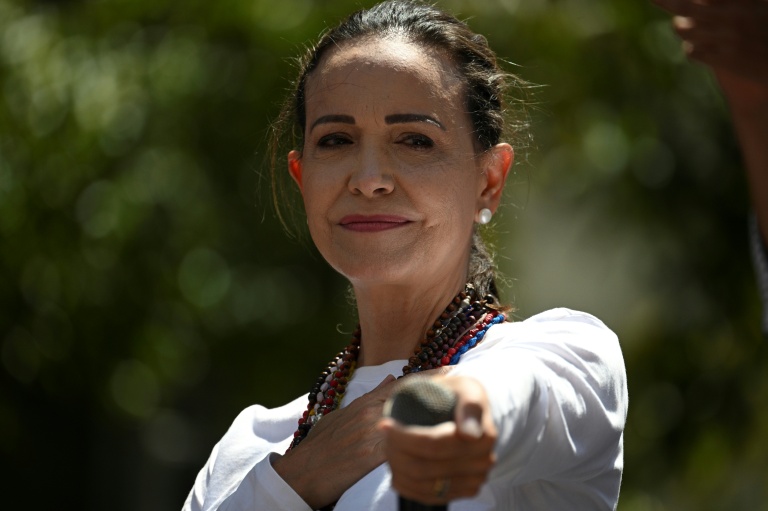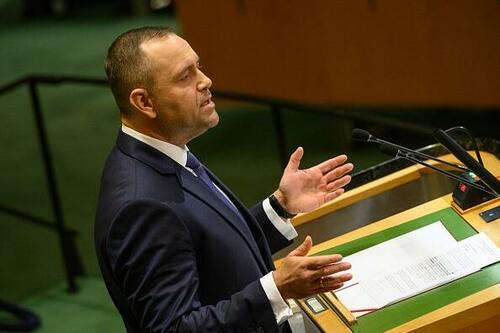Hamas gathering hostages ‘now’, says Trump, as Palestinians return to rubble in northern Gaza – follow live
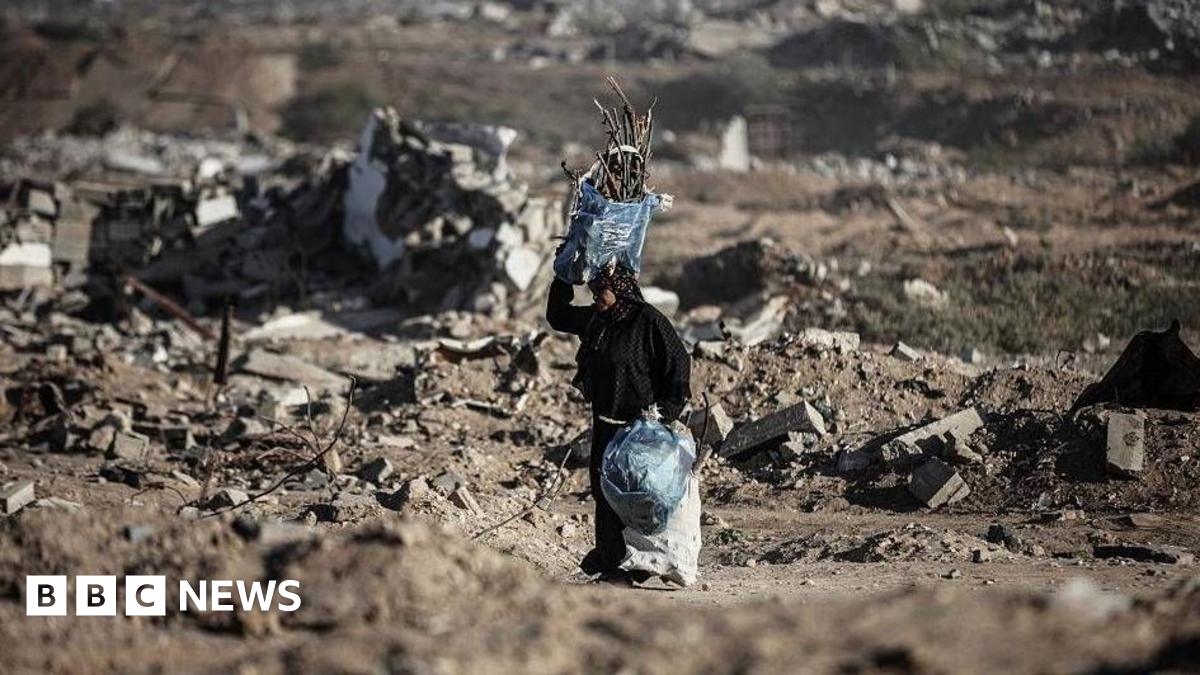
Ceasefire leaves displaced Gazan ‘scared to be happy’published at 10:40 BST
 Alice Cuddy
Alice Cuddy
Reporting from Jerusalem
We’vejust been speaking to 24-year-old Esraa Shaheen, who returned to her home innorthern Gaza during the ceasefire earlier this year.
She was then displaced to the south again after that truce broke down in March.
- For context: In January, a ceasefire halted fighting between Israel and Hamas. It held for two months before an intense wave of Israeli air strikes on Hamas targets in Gaza broke the fragile truce
Shesays the men in her family have already returned north “to see the area, thehouse, and to try to sort things so we can all go back”.
“Theysay the things we saw in the north last time we went back are nothing comparedto now. There is twice as much destruction,” she says.
“They say there isno infrastructure at all – the roads are closed, there is no water, bad signal.We think it might be two weeks until we can return.”
Esraastill can’t believe that a ceasefire deal is in place and worries that it willnot last.
“We’rescared to be happy,” she says.
Who are the Israeli hostages still remaining in Gaza?published at 10:14 BST
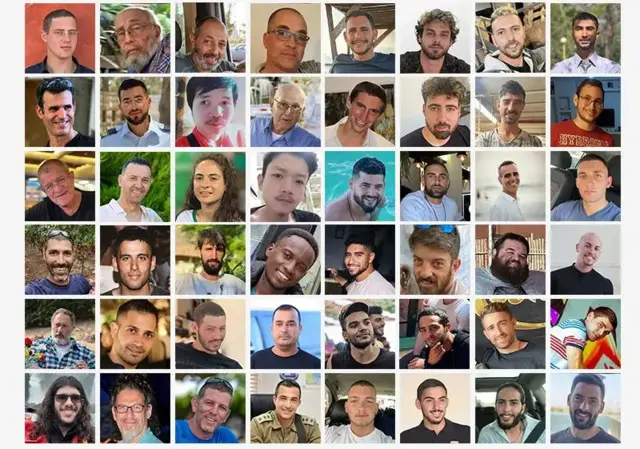
The 48 Israeli hostages remaining in Gaza are expected to be released in the coming days, with Hamas required to meet a 72-hour deadline to return them to Israel as part of the ceasefire plan.
Twenty people are thought to still be alive. Among them are:
Ariel Cunio, 28, was abducted in the attack on Kibbutz Nir Oz on 7 October. Ariel’s partner, Arbel Yehud, was freed in January 2025 under a deal that saw Hamas hand over 25 living and eight dead hostages during a two-month ceasefire.
David Cunio, 35, another of Ariel’s brothers, was also kidnapped from Nir Oz.
Gali and Ziv Berman, 28-year-old twin brothers, were abducted from Kibbutz Kfar Aza with their neighbour, Emily Damari. Ziv was held with Emily for 40 days before they were separated. She was released in January 2025 during the last ceasefire.
Matan Angrest, a 22-year-old Israel Defense Forces (IDF) soldier, was in a tank that was attacked near the Gaza perimeter fence on 7 October.
Matan Zangauker, 25, was taken with his partner Ilana Gritzewsky from Nir Oz. Ilana was released during the November 2023 ceasefire.
You can see the full list of Israeli hostages still held in Gaza in our news story.
As the Gaza ceasefire enters its second day, here’s what you need to knowpublished at 09:53 BST
It’s been nearly 24 hours since a ceasefire between Israel and Hamas came into effect, as part of a US-brokered deal that the Israeli government approved earlier this week. Here’s what you need to know.
- From the moment the ceasefire came into effect on Friday at 12:00 local time (10:00 BST), Hamas was given 72 hours to release all the Israeli hostages from Gaza – we’re now 48 hours away from that deadline
- Hamas is pushing for the release of certain high-profile Palestinian prisoners held by Israel, whose names were not included on a list of some 250 prisoners published by the Israeli justice ministry yesterday
- Under the terms of the ceasefire’s first phase, aid is meant to surge into Gaza – but Unicef reports this morning that has not yet happened and they have hundreds of trucks waiting to go in
- Thousands of Palestinians are making difficult journeys from Gaza’s south back to their homes – many of which are largely destroyed or no longer standing
- Elsewhere, Israeli strikes have hit southern Lebanon overnight, the IDF says. It says it hit “a Hezbollah terrorist infrastructure”. Lebanese media report one person was killed and seven others injured
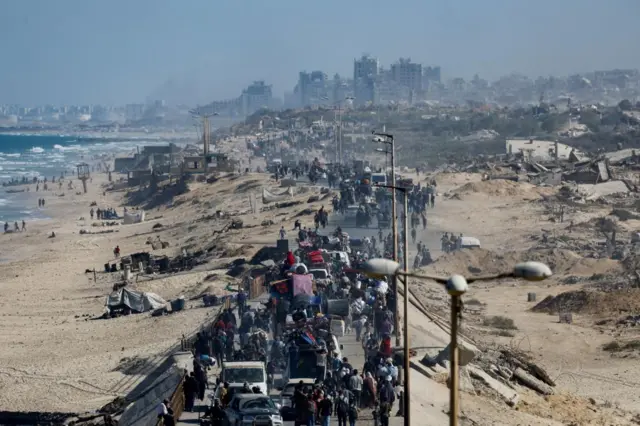 Image source, Reuters
Image source, Reuters
Footage from the last 24 hours has shown crowds of Palestinians making their way up a narrow coastal road to Gaza’s north

Next steps of Gaza ceasefire deal hinges on Trump’s involvementpublished at 09:16 BST
 Hugo Bachega
Hugo Bachega
Middle East correspondent, reporting from Jerusalem
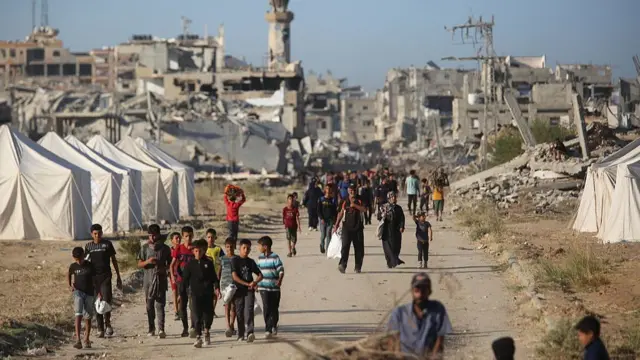 Image source, Getty Images
Image source, Getty Images
As they walk along dusty roads amid the wreckage of buildings, many in silence, there is shock and sadness: the scale of the destruction is difficult to comprehend. Displaced multiple times by the war, Palestinians are returning home, leaving behind their makeshift tents, but some are finding out there is nothing to go back to.
Families are searching the rubble for anything that can remind them of their old lives. The Gaza they knew is gone; and no-one seems to know what the Gaza of the future will be.
Medical teams, meanwhile, are already retrieving bodies under flattened buildings: more than 100 have already been found, with thousands more expected to be waiting to be recovered.
The ceasefire deal, achieved largely because of Trump’s personal involvement, is the first phase – probably the easiest – of the US president’s 20-point plan for Gaza. But what happens next, after the Israeli hostages and Palestinian prisoners are freed, is still not clear. The agreement was reached with extraordinary speed.
Its language is vague – which I explained a bit earlier – but there is no indication of the next steps. Many sticking points remain, including questions over the future of Hamas, the scale of the Israeli withdrawal and who is going to govern Gaza.
The negotiations are now expected to be more difficult, and both Israel and Hamas have reasons to try to stall the talks. There is momentum, but progress will only be possible if the president remains engaged with the process.
Rafah crossing to reopen Tuesday – Italian defence ministerpublished at 09:03 BST
A crucial entry point into Gaza for aid trucks is set to reopen on Tuesday, the Italian defence minister says in a statement.
The Rafah crossing “will be opened alternately in two directions: exit towards Egypt and entry towards Gaza,” Guido Crosetto writes. “The Israelis are working to restore the logistical functionality of the crossing’s infrastructure as quickly as possible.”
About 600 trucks of aid per day will enter Gaza, he adds. “The passage of personnel will not be limited to serious clinical cases, but will be extended to anyone who wishes (subject to the joint approval of Israel and Egypt).”
The Rafah crossing was seized by Israeli forces in May 2024, but reopened in February after an eight-month closure. Limited aid has crossed the border in the months since.
- For context: Italy is working with the EU Border Assistance Mission (Eubam) in Rafah, a civilian mission that supports the Rafah crossing. Its operations have been paused multiple times due to conflict, most recently in January
Unicef says aid not yet surging into Gazapublished at 08:44 BST
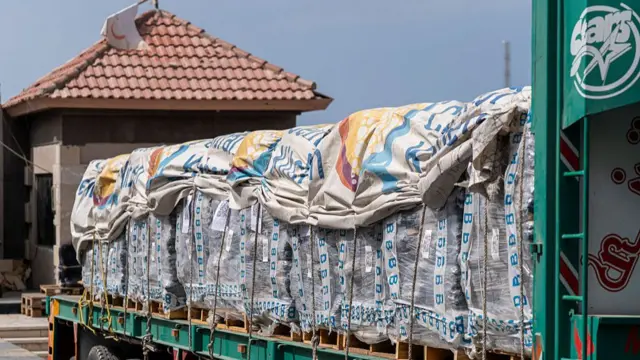 Image source, Getty Images
Image source, Getty Images
Aid trucks have been seen queuing near the Rafah crossing between Egypt and Gaza this week
Tess Ingram of Unicef says the agency is ready to send aid into Gaza – but it hasn’t yet happened.
“We’re really hopeful that this ceasefire will mean that aidwill increase in meaningful volumes because that’s what the children of Gazaso desperately need and have been waiting so long for, we’re currently notseeing that happen yet,” Ingram, who is in Gaza, tells BBC Radio 4’s Today programme.
“We’re really looking for that to happen today, tomorrowhopefully,” adding that what’s needed for that to come to fruition “is for all of the crossingsto open into the Gaza Strip, for those crossings to operate effectively so thatwe can move trucks through quickly, and then we need the operating situation onthe ground… to be able to deliver that aid,” she says.
“We’re ready, we’ve got 1,300 trucks outside as Unicef and our UN partners have many more,” she adds.
“We just need those conditions in place to begin that surge in aid.”
- For context: Under the terms of the first phase of the Gaza deal, about 600 lorry loads of aid a day are supposed to head into the Strip daily from Friday, when the ceasefire came into effect
What we can learn from the wording of the ceasefire agreementpublished at 08:30 BST
 Hugo Bachega
Hugo Bachega
Middle East correspondent, reporting from Jerusalem
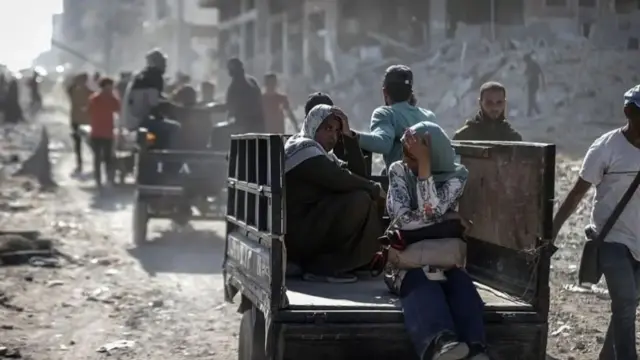 Image source, Getty Images
Image source, Getty Images
A ceasefire has come into effect for the war in Gaza, after the Israeli government approved a US-brokered deal with Hamas in negotiations that had the personal involvement of US President Donald Trump.
The full text of the agreement has not been made public – but part of it has been published by Israeli media.
It appears to lack details and in some cases is vague and ambiguous – perhaps on purpose.
The full title suggests these are steps for the implementation of the 20-point plan that President Trump announced at the White House last week.
However, by highlighting “Comprehensive end of Gaza war”, the document appears to be announcing the end of the two-year-old war.
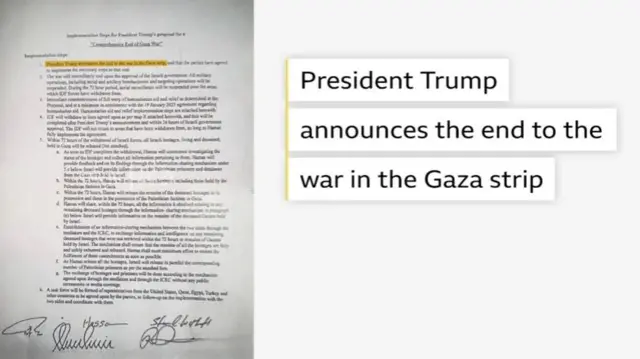
This paragraph explicitly says the war is over, which sets the scene for future discussions on later stages of the president’s plan for Gaza. It appears to suggest that, even if the negotiations reach an impasse, hostilities will not resume.
This is crucial as key sticking points remain, including the Israeli demand for Hamas to disarm, the scale of the Israeli withdrawal, and a plan for who will govern the territory.
The document does not mention guarantees that could have been given that the conflict will not restart, or what could happen if either side returns to fighting.
You can take a closer look at other elements of the deal’s ambiguous wording here
Hamas pushing for some more prisoner releases, BBC understandspublished at 08:15 BST
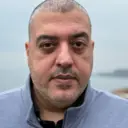 Rushdi Abualouf
Rushdi Abualouf
Gaza correspondent, in Istanbul
The Israeli justice ministry published a list yesterday of 250 Palestinian prisoners it will release in exchange for Israeli hostages.
That list does not include seven high-profile Palestinian prisoners that Hamas had demanded as part of the exchange – including Marwan Barghouti and Ahmad Saadat, figures long seen by Palestinians as symbols of resistance.
A senior Palestinian official familiar with the talks told the BBC that US envoy Steve Witkoff had promised to raise their exclusion with Israeli Prime Minister Benjamin Netanyahu, but Israel has firmly refused to include them.
The BBC understands that Hamas is also pushing for some possible additional prisoner releases. These relate to Palestinian prisoners who were released years ago as part of an exchange for the hostage Gilad Shalit – and then were rearrested after 7 October.
Hamas argues that since they were part of a previous hostage exchange, they should not be included in the 250 figure.
Red Cross ready to help with hostage and prisoner exchangepublished at 07:54 BST
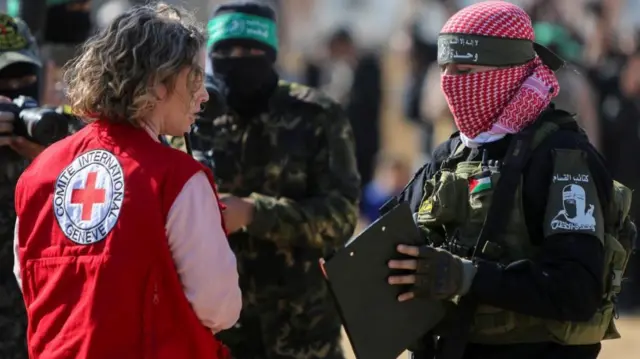 Image source, Reuters
Image source, Reuters
In February, Red Cross members helped facilitate the release of some of the Israeli hostages held in Gaza by Hamas
As we just mentioned, the International Committee of the Red Cross (ICRC) helped facilitate previous releases of Israeli hostages from Hamas.
The ICRC now says it is ready to support the deal by helping “to return hostages and detainees to their families”.
In a statement, it says its teams in Gaza, Israel and the West Bank are “also ready to help return human remains so families can mourn their loved ones with dignity”.
They will bring aid into Gaza and distribute it, it adds.
“The coming days are critical. I urge the parties to hold to their commitments,” president Mirjana Spoljaric writes, saying the agreement “offers a vital chance to save lives and ease suffering”.
The ICRC helped facilitate previous hostage exchanges between Israel and Hamas.
Israeli strikes hit southern Lebanon overnight – IDFpublished at 07:34 BST
Breaking
Israel has carried out strikes in southern Lebanon, the Israel Defenses Forces (IDF) has confirmed.
“Overnight, the IDF struck and dismantled a Hezbollah terrorist infrastructure in southern Lebanon,” the military says. “The site contained engineering machinery used by Hezbollah to reestablish terrorist infrastructure in violation of agreements between Israel and Lebanon.”
Lebanese media citing the country’s health ministry says the Israeli strike on the al-Msayleh area killed one person and injured seven others.
As a reminder, Hezbollah began firing rockets into northern Israel a day after the Hamas-led 7 October attacks, saying it was acting in solidarity with Palestinians in the Gaza Strip.
The longstanding conflict escalated and led to an intense Israeli air campaign across Lebanon, and a ground invasion of southern Lebanon – a ceasefire came into effect in November 2024.
How will the hostages be released?published at 07:15 BST
 Tom Bennett
Tom Bennett
Reporting from Jerusalem
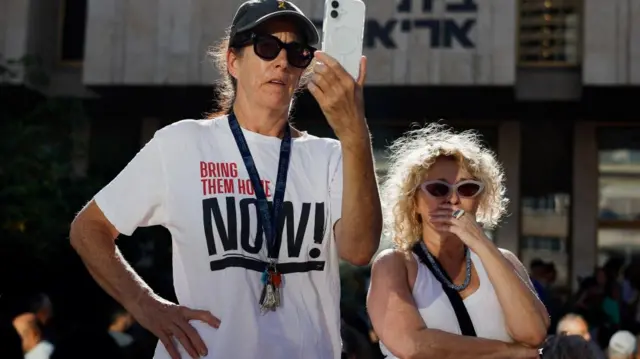 Image source, Reuters
Image source, Reuters
A woman, wearing a “Bring them home now!” shirt, stands in Hostages Square in Tel Aviv after a ceasefire between Israel and Hamas in Gaza went into effect
The Israeli military announced on Friday it had “begun positioning” its troops along the lines detailed in the ceasefire agreement. It said the ceasefire came into effect at 12:00 (10:00 BST) on Friday.
From that moment, a 72-hour countdown began. During this time, Hamas must release all 20 hostages who are believed to still be alive.
The exact details of their release remains unclear, but in previous hostage handovers they’ve been collected by the Red Cross which has transferred them to Israel. From there, they have been airlifted to Israeli hospitals for check-ups and to be reunited with their families.
The bodies of deceased hostages will also be returned, though it is unclear how long this could take.
A copy of the agreement shared by Israeli media states that the handovers will take place “without any public ceremonies or media coverage”. Previous hostage handovers have involved highly-choreographed Hamas ceremonies – something the Israeli government wants to avoid.
During this process, we expect to see the release of about 250 Palestinian prisoners serving life sentences in Israeli jails and 1,700 detainees from Gaza.
We also expect to see about 600 humanitarian aid trucks entering Gaza daily from now on.
After this process has been completed, it is thought negotiations will begin over the latter phases of Donald Trump’s 20-point plan.
‘Where will we live?’: Palestinians detail their experience of returning to Gaza’s northpublished at 06:51 BST
‘It’s all gone’: Gazans return to destroyed homes
US to send 200 troops to Israel to monitor Gaza ceasefirepublished at 06:37 BST
 Tom Bateman
Tom Bateman
US State Department correspondent
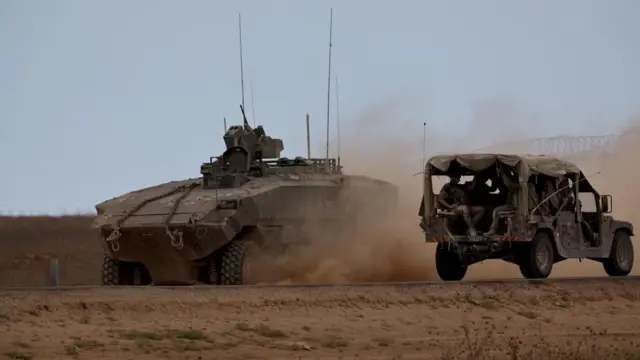 Image source, EPA
Image source, EPA
Up to 200 US troops already based in the Middle East will be moved to Israel to help monitor the ceasefire in Gaza, according to US officials.
The US military will establish a multinational taskforce in Israel, known as a civil-military coordination centre, which is likely to include troops from Egypt, Qatar, Turkey and the UAE, they said.
One senior official said no US forces will enter Gaza, adding that the American role was to create a Joint Control Center which will “integrate” the multinational force going in.
The taskforce will be led by US Central Command (Centcom) based in the region, and is intended to oversee the progress of the ceasefire agreement and also help coordinate humanitarian assistance.

How many buildings in Gaza have been damaged?published at 06:00 BST
By Kayleen Devlin
Thousands of displaced people have begun walking north along al-Rashid street towards Gaza City following the beginning of the ceasefire and withdrawal of Israeli troops.
What they will be returning to is the widespread destruction brought about by two years of war.
According to a satellite imagery analysis released earlier this month from researchers at Oregon State University, 198,883 buildings in the Gaza Strip are thought to have been damaged since the start of the war.
Destruction of buildings can be seen across the territory, with Gaza City one of the worst-hit areas. Researchers estimate that 74% of buildings in the Strip’s largest urban area have likely been damaged since 7 October 2023.
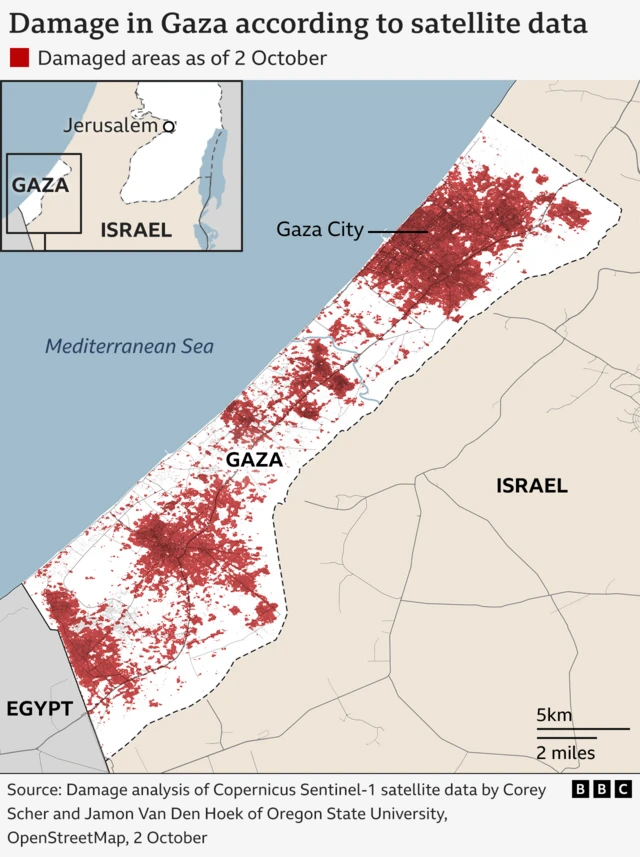

Despite Trump’s exclamation, questions remainpublished at 05:50 BST
 Lyse Doucet
Lyse Doucet
Chief international correspondent
When President Trump announced this ceasefire deal, he hailed it, as he often does, in epic terms. This is more than Gaza, he exclaimed; this is peace in the Middle East.
The reality is far less grand.
Ending, for now, this grievous Gaza war, finally bringing Israeli hostages home in exchange for Palestinian prisoners, is a major achievement which brought enormous relief and joy.
The surprising speed in which this deal was done, the way some details are, even now, still being sorted, underlines how President Trump was in a hurry to get it over the line, and be seen to do it.
But there’s still little detail and no decisions on much more difficult issues: Will Hamas ever give up its guns? Will Israel ever end its military occupation?And what is the political horizon, that vague phrase in President Trump’s 20-point plan which much of the world translates as a Palestinian state – but Israel firmly rejects.
There’s little talk here of peace. At best, it is a calm before yet more storms – unless President Trump, and many others, continue to exert the huge pressure that made this first phase possible.
Trump: There is ‘consensus’ on next stepspublished at 05:39 BST
 Image source, EPA
Image source, EPA
On Friday, we heard from US President Donald Trump about the next stages of his plan to end the two-year war.
- Trump said he believes the ceasefire between Israel and Hamas will “hold” because “they’re all tired of the fighting”
- The president also says that Hamas is currently gathering the hostages “now”, adding “they’re in some pretty rough places”
- He said that “for the most part, there is consensus” on how the next stages of his plan will work – but he acknowledged that “some of the details… will be worked out”
- Major sticking points include uncertainty over the disarmament of Hamas and the future governance of Gaza
- Trump confirmed that he will meet a “lot of leaders” in Cairo on Monday to discuss the future of Gaza – although the list of attendees is not yet clear
- Before that, Trump is expected to travel to Israel and address the country’s parliament – the Knesset
Israel says it has ‘completed’ first phase of Gaza withdrawal, as thousands of Palestinians return homepublished at 05:28 BST
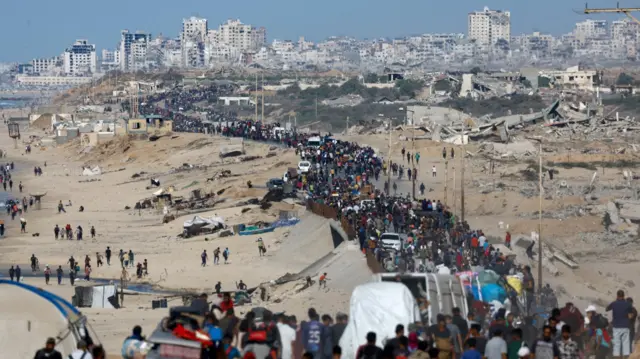 Image source, Reuters
Image source, Reuters
The people of Gaza have spent their first night since the ceasefire between Israel and Hamas came into effect.
If you’re just joining our coverage, here’s where things stand on Saturday morning in Gaza:
- Israel’s military says it has completed the first phase of its withdrawal from Gaza, after a ceasefire with Hamas came into effect on Friday morning – though Israeli troops still occupy roughly half of the territory
- Thousands of Palestinians have been returning to their homes in northern Gaza, an area heavily bombarded over recent months
- Hamas has until 12:00 local time (09:00 GMT) on Monday to release all Israeli hostages – including 20 who are believed to be alive and up to 28 hostages’ remains
- Israel is due to release about 250 Palestinians prisoners serving life sentences. A further 1,700 Palestinians from Gaza who have been detained should also be released
- Some 600 aid lorries were expected to enter Gaza from Friday, although it is not yet clear whether increased aid has reached people
- Up to 200 US troops already based in the Middle East will be moved to Israel to help monitor the ceasefire in Gaza, US officials said
Recent Top Stories
Sorry, we couldn't find any posts. Please try a different search.




